Cash flow is the lifeblood of your business. Long-term, stable cash flow involves so many moving parts to keep track of. Business advisors and accounting experts can help you improve your company’s cash position, particularly as there are downtimes or when you face cash-flow challenges such as inflation, price increases, or having less revenue due to seasonality.
Take a look at nine practical cash flow tips for small businesses.
1. Increase Your Margins
Increasing your company’s margins can help you fund various aspects of your operations. Two main strategies for improving your margins come from increasing prices or decreasing costs to deliver products or services, or you can do both at the same time. You can accomplish this by doing this gradually or all at once. The trick is making sure this is the right course of action.
2. Manage Business Volume
Some companies have seasonal volume, such as landscaping companies or retailers that sell more during the winter holidays. You might also see one year’s worth of business in one month. Mitigating seasonality can help you balance annual work over the span of 12 months. It can help you manage deadlines better and keep employees on staff for longer periods. For example, offer regular clients a discount for postponing work if possible.
3. Diversify Financing Opportunities
Financing can come from many different sources. Traditionally, small businesses leverage a small business loan or venture capital. As your operations take off, consider other forms of financing that can help you have more cash on hand. Invoice factoring, or invoice financing, works when specialized lending companies will purchase your invoices for you before they come due. When the customer pays, the lending company takes a percentage of the payment as their cut. For example, you have 60-day invoices. Rather than waiting 60 days, your invoice factoring company can pay you after 15 days.
Another financing opportunity comes from merchant cash advances, which are helpful for retailers and restaurants. You repay these cash advances automatically through a percentage of your daily sales that come from debit or credit card transactions.
Related Post: Tax Planning Strategies for Businesses
Purchase order financing provides another way to fund projects. Rather than financing invoices you send, start at the other end of the procurement process with purchase order financing. This comes in handy if you have a huge order you can’t fulfill because you need to purchase more goods. Having a specialty company finance the purchase order gives you the flexibility you need to make the order happen on time, which leads to a happy customer and more repeat business.
4. Sell or Lease Outdated or Idle Equipment
Do you have equipment just sitting there doing nothing? Do you have extra equipment on hand that’s in storage and you haven’t used in several years? Find a market value for that equipment and put it on the market to sell or lease. Use the proceeds as you see fit. Even used equipment that is way too old to be useful anymore can get you some cash for spare parts. Consider selling used computer equipment to specialty companies that will give you some cash for the machines.
5. Negotiate Better Terms With Vendors and Suppliers
Vendors want to maintain good relationships with you because they want to keep a favorable business asset in their corner. Consider negotiating with your vendors to delay making payments if it means having enough cash on hand to make your operations work. Rather than 30-day payments, turn them in payments after 45 days. Some vendors will work with you, others may not. But having that extra time might make a difference in keeping more staff on hand for those business times when you need extra help.
6. Incentivize Your Customers to Pay Faster
Put verbiage in your contracts that give discounts to customers for paying faster. For example, you have an order with a payment due in 30 days for $10,000. If the customer pays in 15 days, offer a 3 percent discount that reduces the final payment to $9,700. Not only do you get your payments faster, but you also gain a loyal customer that enjoys the discount. You get your cash faster and your customer gets a discount.
7. Cut Your Expenses
Cutting your expenses is almost the same as raising prices, but it’s not quite so obvious. Service companies may consider spending less time doing the same work. Manufacturers can use lower-priced raw materials or older inventory before purchasing new or higher-quality items. Internally, try to find ways to automate benefits packages, shop around for cheaper health benefits, and offer tax-deferred benefits that see a higher ROI.
Related Post: Long-Term Care Expenses: What Can You Deduct?
8. Use Automated Tools
Automated tools and processes cut down on mundane tasks, allowing your staff to focus on high-level work, strategic work, planning, and improving your cash flow. For example, automating procurement processes and connecting them with your accounting and finance software can help your staff spend more time on strategic procurement where you find better vendors to cut down on your expenses while improving quality.
9. Utilize Incremental Payments for Milestones
Let’s say you have a contract that pays half the amount up front and then half the amount upon completion. What if you added milestone payments, like when the project is halfway complete? Then you have one-third at signing, one-third at the halfway point, and one-third upon completion. If you have monthly milestones, you can bill monthly. Milestones depend on the scope of the project and how big the milestones are.
Business Advisors Can Help You With Cash Flow Strategies
Every business is unique, and every cash flow situation is unique.
One of the ways The Whitlock Co. helps privately owned companies is through strategic business planning, including developing practical tips for cash flow strategies.
Contact us for a consultation to see what we can do for your company.

